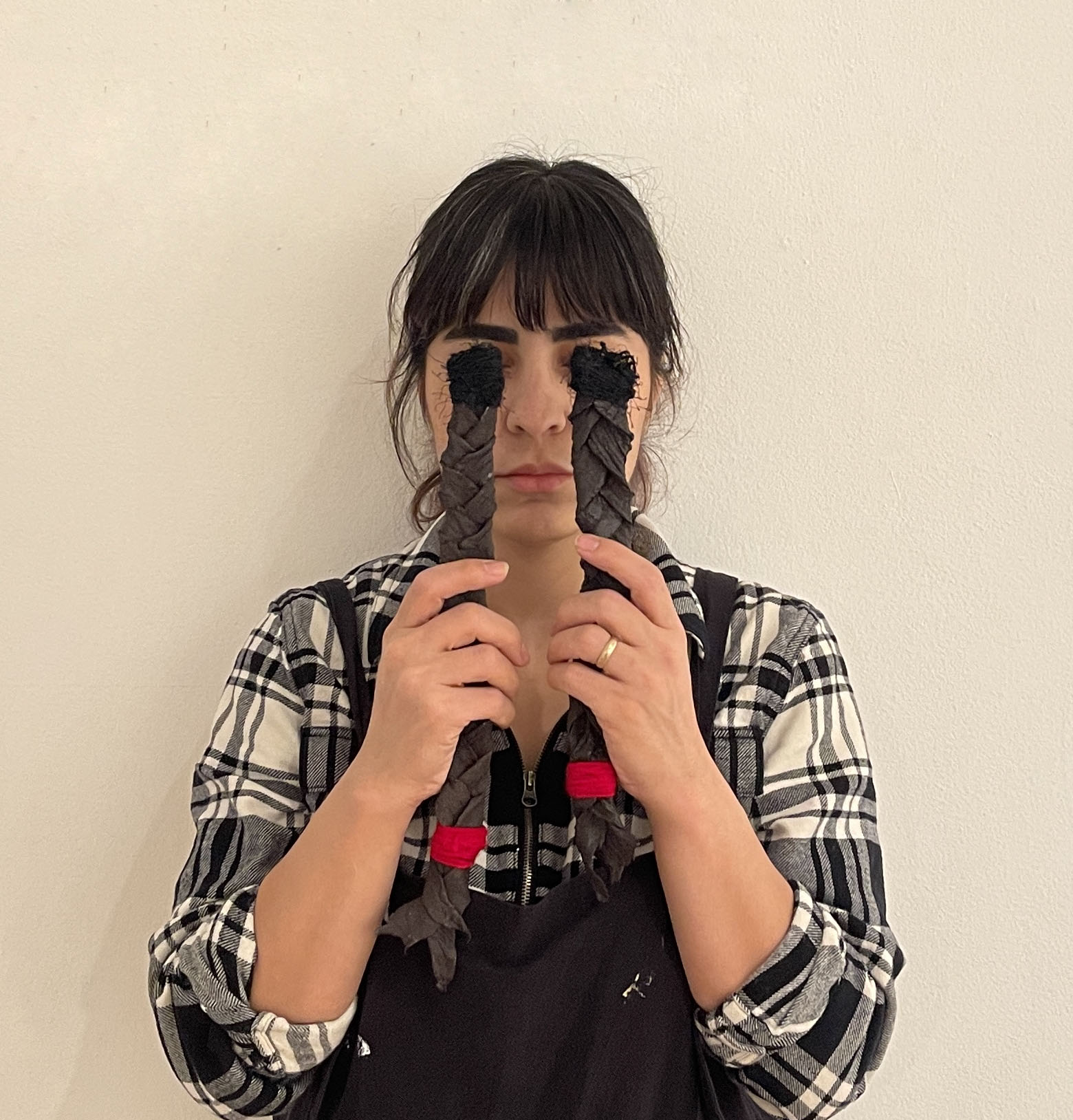Displacement and ethnic cleansing shaped my life long before they entered my art. As a child, I vividly remember families from Bashur (Southern Kurdistan) fleeing the Anfal Genocide and seeking refuge in Rojhelat (Eastern Kurdistan), where my family welcomed one family and shared our home with them for about a year. Unwillingly and unconsciously, I became aware of the brutal weight of genocide and survival—formative experiences that continue to shape how I engage with history, memory, and belonging in my work. That early encounter with displacement never left me; it settled quietly within my body, traveling with me across time. Having lived in Rojhelat for three decades before becoming part of the diaspora, I often find myself disoriented in both time and place. Carrying this layered sense of presence and absence, I open my work to questions of decolonial belonging, knowledge, and art-making.
My practice spans ceramics, sculpture, installation, video, and social practice, shaped by materials such as clay, yarn, textiles, and found objects. These materials carry cultural memory in distinct ways: clay bears the weight of the land as a living repository of survival and loss, textiles trace the labor and resistance of Kurdish women, and yarn weaves together fragmented stories. Through layering, stitching, mending, and building, I explore processes of survival, repair, and healing.
Exploring how the body and land carry personal and collective memory—particularly within contexts of displacement, erasure, and resistance—my practice embraces art-making as an embodied epistemology: a way of knowing that resists hegemonic structures by centering and recontextualizing stories, materials, and processes often dismissed or marginalized. Drawing from craft traditions, oral histories, and ancestral myths—especially those passed down by my mom, my grandma, and other Kurdish women—I engage with embodied knowledge and everyday acts of resistance that form the heart of Kurdish feminism, enduring despite cultural erasure, war, and the violence of borders. I see the body not only as a site of trauma but as a living archive where histories and acts of resistance are remembered and reactivated—where the body and the land remember together, folding into one another. Through my studio practice, I create spaces where memory can be reassembled, where silenced stories can surface, and where art becomes a living, relational archive. My work insists on remembering, on resisting, and on imagining otherwise. It is about Berxwedan Jiyane—Resistance is Life.
Sahar Tarighi is a Kurdish interdisciplinary artist based in Columbus, OH. Working across ceramics, sculpture, installation, video, and social practice, her work is rooted in the lived experiences and collective memory of displacement and marginalization. Drawing from ancestral myths, material culture, and oral histories—those kept alive through the voices of Kurdish women—she explores themes of resilience, cultural erasure, and embodied resistance. Through clay, textiles, yarn, and found objects, she creates spaces where personal and geopolitical histories resurface, where body and land intertwine as living archives.
Her research and studio practice examine the intersections of memory, identity, and the decolonial imaginary, with a focus on Kurdish feminism, alternative epistemologies, and storytelling as acts of resistance to hegemonic structures. Sahar’s work has been exhibited nationally and internationally in South Korea, the United States, Chile, and Russia.
She has received several awards and fellowships, including Second Place at the 2025 Edward F. Hayes Advanced Research Forum (The Ohio State University) and support from the National Endowment for the Arts (NEA) for Project M at the Watershed Center for the Ceramic Arts. Other honors include the Maxwell Hanrahan Foundation Scholarship for the Watershed Residency and full scholarships to the Penland and Arrowmont Schools of Arts and Crafts through the Windgate and TCN Fellowships.











